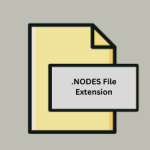.SFZ File Extension

SFZ Sample Definition File
| Developer | Cakewalk |
| Popularity | |
| Category | Audio Files |
| Format | .SFZ |
| Cross Platform | Update Soon |
What is an SFZ file?
The .SFZ file extension represents a significant format in the world of digital music production. This file type pertains to the SFZ Sample Definition File, a text-based format used for describing how a collection of samples are to be played back.
More Information.
Initially introduced in the early 2000s, the SFZ file was designed to provide a flexible and efficient way to map sample libraries.
The format aimed to overcome the limitations found in existing sample formats by offering more control over how samples are played and manipulated.
Origin Of This File.
The SFZ format was developed by René Ceballos, the founder of RGC Audio. It was initially created as a free, open alternative to more restrictive, proprietary formats used in sample playback.
File Structure Technical Specification.
SFZ files are essentially text files that use standard ASCII characters. They don’t contain audio data themselves but reference external sample files (usually WAV or AIFF files).
An SFZ file includes opcode instructions that dictate how the sampler engine should interpret the samples. These opcodes can specify key ranges, velocity layers, loop points, and various articulation parameters.
How to Convert the File?
Converting .SFZ files typically involves converting the sample data referenced by the SFZ file into a different audio format. Since SFZ files are essentially text-based scripts that define how audio samples are to be played, the conversion process involves using these definitions to render the samples into a new format, like WAV or AIFF. Here’s a general guide on how to convert SFZ files:
1. Choose a Suitable Sampler Software
First, you need a sampler software that can read and interpret SFZ files. There are several options available for different operating systems:
- Windows & Mac: Software like sforzando, Kontakt, or Logic Pro X’s EXS24 sampler can read SFZ files.
- Linux: LinuxSampler is a popular choice.
- Mobile Platforms: Options are limited, but some mobile DAWs might support SFZ files.
2. Load the SFZ File into the Sampler
Open your chosen sampler software and load the SFZ file. This step will typically involve browsing to the location of the SFZ file and any associated sample libraries.
3. Check and Adjust Settings
Ensure that the sampler has correctly loaded all the samples and that key mappings, velocities, and other parameters are set as intended. Adjust any settings if necessary to match your desired output.
4. Render or ‘Bounce’ the Audio
Most samplers allow you to ‘render’ or ‘bounce’ the audio to a new file. This process involves playing back the SFZ file and recording the output in real-time, creating a new audio file in a format like WAV or AIFF.
- File Format: Choose the desired format for your new audio file. Common formats include WAV, AIFF, or MP3.
- Sample Rate and Bit Depth: Select appropriate sample rate and bit depth settings. For high-quality audio, 44.1 kHz sample rate and 16 or 24-bit depth are standard.
- Rendering Options: Depending on the software, you may have options for rendering the entire file or just a portion, and whether to include effects or render dry.
5. Export the New Audio File
Once the rendering process is complete, you can export the new audio file. Save it to your desired location with an appropriate file name.
6. Post-Conversion Editing (Optional)
After conversion, you might want to edit the new audio file for further refinement, such as adjusting levels, applying effects, or trimming unwanted sections. This can be done in any standard audio editing software.
Advantages And Disadvantages.
Advantage:
- Flexibility: SFZ files allow for extensive customization and control over sample playback.
- Compatibility: Being a text-based format, SFZ files can be created and edited with any text editor.
- Open Format: The open nature of SFZ encourages broad support across different software platforms.
Disadvantage:
- Complexity: Creating complex instruments can be time-consuming and requires a deep understanding of the opcodes.
- Limited In-Built Effects: Unlike some proprietary formats, SFZ relies on the sampler engine for effects and additional processing.
How to Open SFZ?
Open In Windows
Windows users can open SFZ files using a variety of sampler plugins compatible with digital audio workstations (DAWs) like FL Studio, Ableton Live, or Reaper. One popular choice is sforzando, a free SFZ player.
Open In Linux
Linux users can turn to software like LinuxSampler or Carla, which provide SFZ support and integration with other Linux audio applications.
Open In MAC
On macOS, apart from sforzando, users can utilize Logic Pro X or MainStage, which offer native support for SFZ files through their integrated samplers.
Open In Android
For Android, options are more limited. Certain mobile DAWs might offer SFZ compatibility, but these tend to be less feature-rich compared to desktop applications.
Open In IOS
iOS users can open SFZ files in apps like GarageBand or through AUv3 compatible apps that support external sampler instruments.
Open in Others
Other platforms may require specific software or workarounds to use SFZ files. It’s essential to research compatible software for your specific platform.













